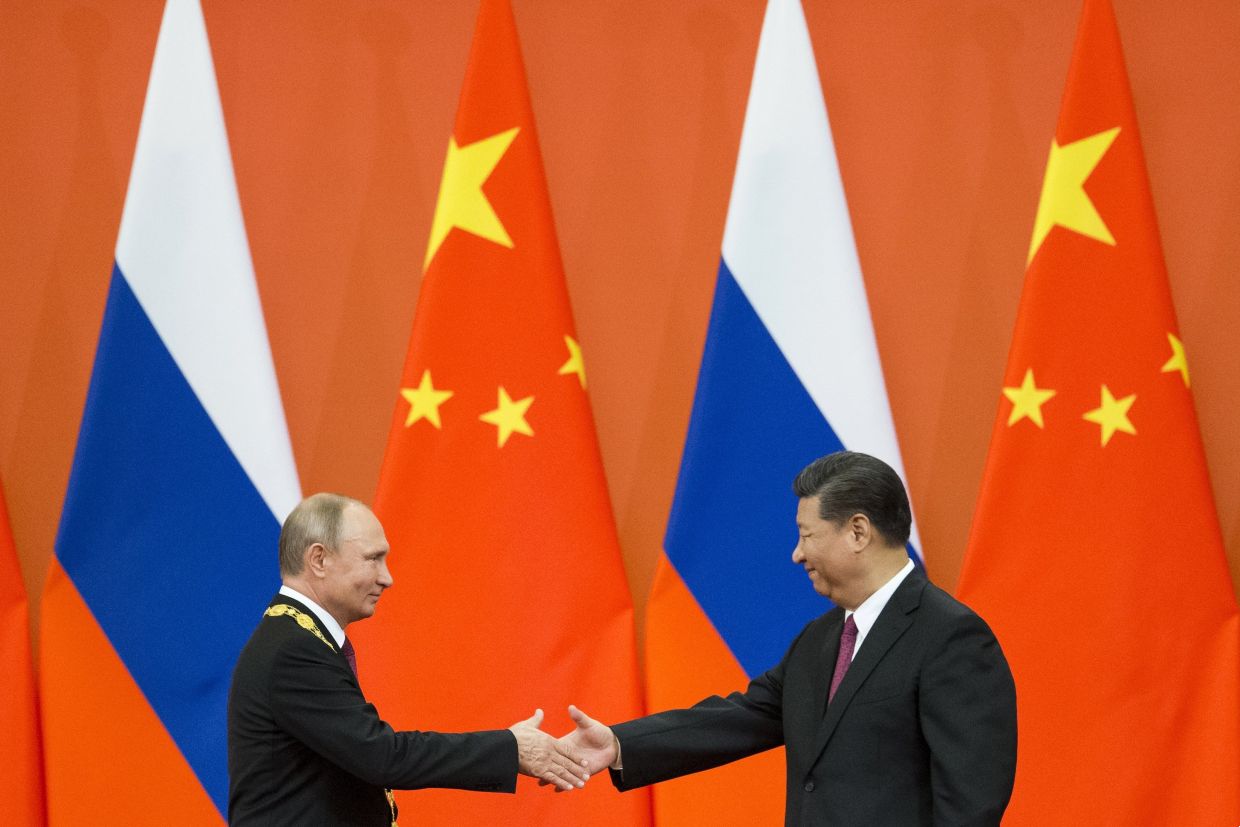Ritu Sharma
The documents are about the war games conducted by Russia from 2008 to 2014. These exercises considered how China is fomenting unrest in Russia by paying protestors and attacking its sparsely populated areas in the far east of the country.
Russian military documents leaked to the Financial Times quote wargames written by the Russian officers. The conflict simulations talked about the population in the eastern cities of Russia rising in violent protests and clashing with police. In the meantime, smugglers brought in arms across the borders to carry out attacks on police stations and military barracks.
And as tensions reach their tipping point, China increases its defense production and shores up its deployment along the border while accusing Russia of “genocide.”
These wargames were ongoing even as Russian President Vladimir Putin and Chinese Xi Jinping were professing their commitment to a “no limits” partnership.
The Russian government has cast aspersions on the veracity of the documents, and the Chinese ministry has re-iterated previously articulated thoughts about “eternal friendship and non-enmity.”
The Chinese foreign ministry said the “threat theory” has no place in ties between China and Russia.
Despite making the right noises and the Ukraine invasion leaving Russia with few choices in terms of friendly countries, the Chinese government has not failed to remember the territorial disputes between the two countries.
On February 14, 2023, the Chinese Ministry of Natural Resources published a new version of its world map – directing a return to using the Chinese names of eight cities and areas occupied by the Russian Empire in the late 19th and early 20th centuries.
Under Beijing’s new directive, Vladivostok once again is called Haishenwai (meaning Sea Cucumber Bay), while Sakhalin Island is called Kuyedao. The Stanovoy Range is back to being called the Outer Xing’an Range in Chinese.
With India, too, China has used the same tactic by assigning Chinese names to 66 cities that it claims in India.
Western Countries Push Russia Closer To China
No doubt, one of the scenarios simulated by Russia foresees a scenario where there is a growth of “a new generation of nationalist leaders” in Dasinia, a hypothetical country matching China’s geography.
In the simulation, while the Dasinia expresses to deepen ties with the Northern Federation, aka Russia, the cynical Dasinians seek to exploit tensions between the North Federation and Western countries.
Dasinia, aka China, seeks to exploit the discord between the North Federation, aka Russia, with Western countries by importing hydrocarbon materials at “extremely disadvantageous conditions” to power its growing economy. And as the North Federation refused, Dasinia began preparation for war.
Recently, Indian Minister of Foreign Affairs Dr. S. Jaishankar asserted that the world must give Russia more options rather than “closing doors” on it and pushing it towards a closer embrace with China. He said it is a mistake for Western countries to “railroad Russia into a single option.”
In another scenario, China mounts attacks via Kazakhstan, first striking western Siberia and even the Urals. The main goal of the attack was to ultimately wrest control of Russia’s territory in the Far East.
Throughout history, the border between Russia and China has been a source of tension between the two countries. Large parts of the Russian Far East came under the control of the Tsarist Empire after the signing of several “unequal treaties” with the Qing dynasty.
In the 20th century, the Far East witnessed two violent border conflicts, the last between the Soviet Union and the People’s Republic of China in 1969. However, over the years, the two countries have made efforts to settle their issues on the border, and the transfer of territories in 2008 officially marked the end of any land disputes between them.
However, the region remains vulnerable to another border dispute. The resource-rich Russian territory is sparsely populated, with 23.9 million Russians living on the border between 20 areas of Siberia and the Far East. On the contrary, the Chinese provinces bordering Russia have a combined population of 111 million.
The leaked documents also reveal Russian apprehensions about the Chinese diaspora within Russia. This diaspora in Russia, even though small, is considered by China to be an explicit foreign policy tool of Beijing.
China ‘Biggest Winner’ Of Russia-Ukraine War?
To the victor belongs the spoils of the war. In the Ukraine-Russia war, a third party emerged victorious – China. Since West-supported Ukraine and Russia have locked horns, China has gained access to unforeseen geographical locations like the Vladivostok port, and its auto-economy has scaled up exponentially.

Vladimir Putin and Xi Jinping
The city has been home to the Russian Pacific Fleet. In 1860, the port was ceded to the Russian Empire by the Chinese Qing. With the opening of the port, the northeastern interior of China will gain access to the sea. By reaching this seaport via rail, products from Northern China will be further shipped to Southern China by ship.
The Vladivostok port, formerly known as Haishenwai during the Qing dynasty’s rule, will provide cross-border transit for domestic trade shipments in Northeast China’s Jilin province.
The General Administration of Customs China (GACC) announced this on its website without much fanfare. The move, Beijing says, aligns with its “national strategic plan to re-vitalize Northeast China’s industrial base and facilitate the cross-border transport of domestic trade goods with the use of overseas ports.”
Previously, China had staked a claim on the Vladivostok port through historical rights. Now, China is defining the participation of the Vladivostok port in China’s trading system as a reflection of the “high-level strategic mutual trust between China and Russia.”
With the Western sanction crippling the Russian economy, its dependency on China is bound to increase. Bilateral trade between China and Russia stood at US $73.15 billion over the first four months of 2023, surging 41.3 percent year-on-year, according to the GACC.
No comments:
Post a Comment